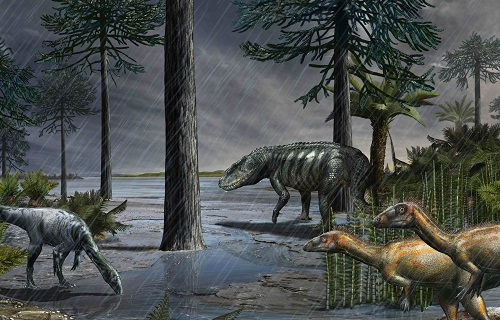
Several mass extinction events have happened on earth, and it includes the most popular Cretaceous–Paleogene extinction event that wiped out dinosaurs, then dominant species from the planet's surface. Now a new study has suggested that another mass extinction event had happened on earth around two billion years ago, and it literally wiped out more than 99 percent of the life on the planet.
During the study, researchers analyzed rocks in Hudson Bay, Canada, that formed billions of years ago and found that there was a sharp drop in life around 2.05 billion years ago. It should be noted that this ancient mass event happened in conjunction with the end of the Great Oxidation Event (GOE), a period between 2.4 billion years and 2 billion years ago, that was characterized by a drastic drop in the planet's oxygen levels.
"Using insights from sulfur and barium isotope measurements, combined with radiometric ages from bracketing strata, we infer that the sulfate minerals studied here record ambient sulfate in the immediate aftermath of the GOE. These sulfate minerals captured negative triple-oxygen isotope anomalies as low as ∼ −0.8‰. Such negative values occurring shortly after the GOE require a rapid reduction in primary productivity of >80%, although even larger reductions are plausible," wrote the researchers in the study report published in PNAS.
Peter Crockford, a researcher at Israel's Weizmann Institute of Science and Princeton University told Newsweek that earth was abundant with several life forms before this mass extinction event.
"Over the 100 to 200 million years before this die-off event there was a large amount of life on the planet, but after this event a huge portion died off. However, instead of recovering like more recent mass extinctions, the amount of life on the planet or size of the biosphere stayed small for the following billion years of Earth's history—about two billion to one billion years ago," said Crockford.
The research report also suggested that this event was the result of a theory which they call 'oxygen overshoot'. As per researchers, photosynthesis and weathering produced a massive amount of oxygen on the earth. However, during those times, oxygen emitting life forms on earth were so abundant, and they exhausted their nutrient supply, thus failing to survive.









